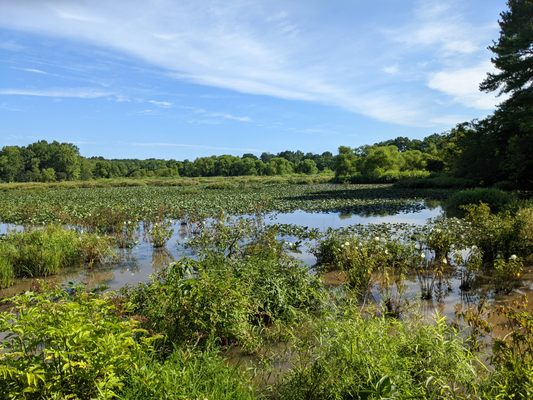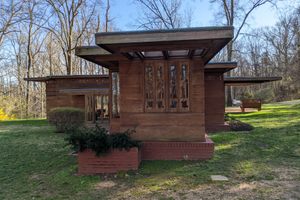About
Driving along Pole Road on the outskirts of Alexandria, Virginia one might easily miss this obscure suburban wetland, named for the only person ever to be awarded both first and second place in the Federal Duck Stamp contest in the same year.
Jackson Miles Abbott was a lieutenant colonel in the Army Corps of Engineers, and also an avid birdwatcher and wildlife painter. His orinthological interests blossomed at the age of six, and he learned to paint from his father, noted wildlife artist Jacob Bates Abbott.
After studying zoology at Swarthmore College, he joined the U.S. Army in 1941. During his first year of military service, he started the Annual Christmas Bird Count at Ft. Belvoir, an event that has now become an annual tradition within the Audubon Society.
He designed camouflage before earning a Bronze Star in World War II. Following the war, he held numerous ranks as he rose to lieutenant colonel.
Later in life, he ramped up his efforts as a conservationist, helping to protect Huntley Meadows Park and Dyke Marsh.
Abbott died of cancer in 1988. The following year, the U.S Army Corps of Engineers dedicated the 150-acre Jackson M. Abbott Wetland Refuge.
This lovely watershed area features a loop trail just over a half mile long that encircles a large pond and has at its far end an observation deck that overlooks a massive network of lily pads across a vast wetland, often populated by numerous birds of all shapes and sizes. It's a very fitting tribute to Abbott, whose life's work and passions are reflected beautifully in this nature preserve.
Related Tags
Know Before You Go
There is a small parking lot near the entrance, after which visitors must walk along a concrete trail into the woods that opens up to the loop path, leading out to the larger wetlands area.
There are signs warning visitors to stay on the path due to the possibility of harmful ordnance still being present in the surrounding woods.
Community Contributors
Added By
Published
August 12, 2022














































